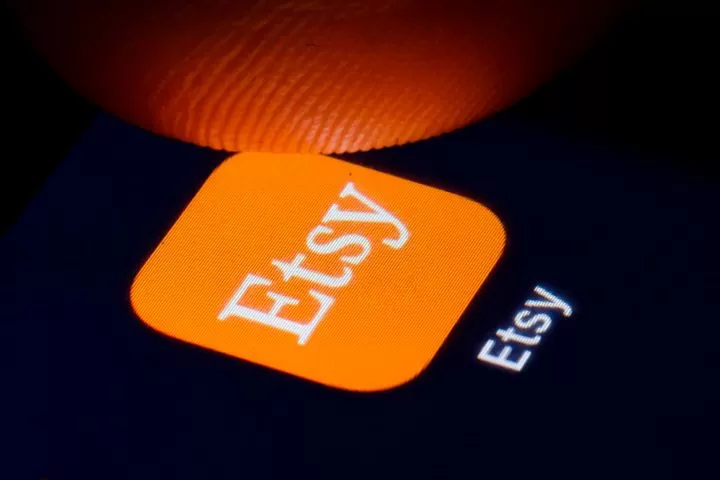The ecommerce challenge for profitable customers is that today’s retailers need to do three things simultaneously: increase customer revenue, decrease marketing costs, and continue to be relevant.
This is not easy, particularly when you consider that retailers need to achieve these goals across multiple campaigns, multiple channels and in real time. All this must be accomplished within a framework of outstanding customer experience. The stakes are high.
Retailers are rethinking how they deal with this conundrum. Utilising data-driven analytics to predict the company’s ability to change consumers’ behaviour is one of the most popular ways to achieve these goals.
Since the soft retail economy began in 2008, retailers have lost a lot of pricing power, and that is hitting their margins. Many consumers have become more cost-conscious and discount-driven, habitually waiting for discounts before making any purchase commitment. These people might best be called “serial discounters.”
But not everyone behaves this way. The challenge is to understand who is expecting price reductions and who is not—and when price reductions are necessary to positively influence buyer behaviour. Both of these are a function of a variety of factors, economic and otherwise; and, both are moving targets that require ongoing assessment.
Profitable customers – the risks associated with traditional marketing campaigns
As the world of retailing has changed, customers have, too. Even as consumers have come to expect more discounts, the companies they do business with—more personalised communications, more relevant messaging, more flexibility to interact with businesses across different channels, and greater response speed. Deluged with communications from all sides, they have also become far more discerning about what they will and won’t read.
As a result, discount-based, campaign-oriented marketing holds two key risks for retailers:
- As mentioned above, offering discounts to everyone squeezes margins—sometimes unnecessarily as there are likely some consumers who would pay higher prices.
- An overage of communications, many of which are not particularly relevant, may cause consumers to opt out or tune out, such that they may miss the communications that would most likely prompt them to buy. Uplift modelling can help the retailer determine the best matches between offers and customers, what sub-segments of a contact universe should be incented, and, more importantly, which should not. Retailers must learn to employ intelligent offer management to remain relevant and connected to a loyal customer base while maximising profitability.
New technology tools enable retailers to develop a more effective strategy toward customer engagement, one that is more customer-centric, recognising that not all customers are equal. Leveraging these new approaches can help retailers significantly increase revenues, optimise promotional spending and ensure greater relevancy to both the average customer and the most loyal.
What we have here is a failure to communicate (Cool Hand Luke 1967)
A failure to target the right customers and to follow up with the right customer support has been playing out in all types of companies over the years. A few years ago, one Bain & Co. study found a significant gap between the perceptions of executives (80 per cent of whom think they are doing an excellent job of serving customers) and the perceptions of customers themselves (only 8 per cent of them agree.)
Today, the situation is not much better. Last year Forrester asked more than 7,700 US consumers about their interactions with a variety of companies. Based on their responses, Forrester calculated Customer Experience Index (CxPi) scores for 153 brands in 13 industries. This year’s rankings show that only about one-third of brands earned “excellent” or “good”.
Why uplift modelling makes sense in a retail environment
In medicine, the Hippocratic Oath exhorts doctors to “First, not harm.” With the exploding volume of customer communications and the clear indication that many are falling on deaf ears or worse, this is valuable advice for retail marketers as well. Every customer engagement should have reasonable potential to add business value, and marketers need to keep in mind that there is also often a downside to engaging the customer needlessly.
Technology tools, such as hyper-personalisation software, allow retailers the opportunity to offer management techniques that recognize the differences among customers and their behaviour patterns. Not all offers are created equal. Today’s analytics can enable retailers to anticipate and predict customer needs; and, identify and decide on the most relevant offers for that particular customer. Thus, the “persuadable” will receive different offers from the “Sure Things” based on their purchase history.
The decision on the “best-next-action” offer is performed in real-time, using the retailer’s own data and business rules, including eligibility, cost, value and quantity for each offer. These factors are assessed against predicted outcomes, enabling the retailer to automatically allocate the right offers to the right individuals across the right channels.
Using uplift modelling allows the retailer to optimise the promotional spend
Retailers can apply relevancy more accurately— and focus on the latest opportunities. Overall marketing spend can decrease when it is concentrated solely on those who will take action, rather than all customers.
Consider, for example, a retailer that decides to market a specific model HDTV. The retail marketer pulls a list from their database of all customers who purchased a product in the last three years. Then, without uplift modelling, everyone on that list gets offered the same discount incentive coupon. With uplift modelling the retailer instead takes that list and segments it, marketing that new HDTV to different segments in different ways. Using the four segments described on the left, this sales effort could look like this:
- “Sure Things” will buy with or without an incentive—and the retailer can target this group one of two ways. On the one hand, announcements for these customers can be enough—a special offer isn’t necessary. With this approach, every customer in this group who would’ve used the coupon would buy at full price—so the return on mailing to this segment increases. On the other hand, while an incentive-to-buy isn’t necessary, a special offer to this group could be used as a way to thank them and acknowledge how much the retailer values their business. In this case, any discount is provided to bolster longer-term loyalty and increase lifetime customer value.
- The “persuadables” need an incentive to buy. So this group is sent the discount coupon. Each sale in this group comes in at the level that had been expected for the campaign.
- “Lost Causes” will not buy. The retailer can save the cost of mailing to them. And, by not sending them this irrelevant mailing, when there is another item for which these customers are identified as “Sure Things” or “Persuadable” (this does vary by product and offer)—they are more likely to pay attention to the communication.
- The “Sleeping Dogs” not only will not buy, but they also will react negatively to the campaign. The retailer saves on the cost of mailing, and on the potential loss of business that could result by disturbing them.
To use communications wisely, it pays to segment customers into these groups and to focus on the “Persuadable” – the one group that can produce true incremental business.
In a traditional model, the return on the campaign would be calculated by taking the number of items mailed and the number of sales occurring within a reasonable period of the mailing. In actuality, this overstates the return because it includes those who would have bought anyway; and, it understates the expense because it neglects to consider those who are lost (or never gained) because of the negative impact of the campaign. An uplift model, on the other hand, targets only those who are likely candidates for acting—and acting positively as the result of the campaign.
One catalogue retailer made the move to uplift modelling and found that they were able to slash the volume of catalogues sent in half—while increasing actual incremental revenue by 75%.
What makes uplift modelling so important today?
Customers have more choices about where they get their information, whose advice they will and won’t listen to, and who they will heed. Over-messaging today is therefore filled with far more risk. Dollars spent wastefully today can create issues down the road: even if they do not cause a loss of a customer, they can hurt the customer relationship by weakening the lines of communication.
Experts from Booz & Company (now PwC) once wrote, “Customer-centric companies understand not only what the customer values, but also the value the customer represents to their bottom line. They align their operating models behind a carefully defined and quantified customer segmentation strategy and tailor business streams— product development, demand generation, production and scheduling, supply chain, customer care, etc.—to deliver the greatest value to the best customers for the least cost.
Today’s retailers operate in a much more complex environment than even a decade ago, with the need to reinvent themselves to appeal to a fickle customer audience. Many retail organisations run multiple store brands, employing different merchandising strategies in each brand. Yet the same customer might shop across one organisation’s brands, from the high-end speciality store to the mass-market department store. Technologically savvy retailers can recognise that individual customer, no matter where they shop and employ offer optimisation to elicit purchases at both retail outlets.
Uplift modelling is a customer-centric solution that helps businesses gain focus on the communications targets that really matter. With the right uplift model and a valid control group, organizations can achieve results over and above current approaches. Many retailers, for example, could be saving money and improving performance on cross-sell, upsell and loyalty campaigns running right now—simply by doing a better job of targeting specific customers who are “Persuadable” for incremental sales.
Retail challenge profitable Customers – Conclusion
In the words of management icon Peter Drucker, “We have to manage our limited resources of people and money for maximum effectiveness. And we have to think through very clearly what results are for our organisation.” In the face of a more saturated market and a tougher fight for every share point, marketing spend needs to be more targeted to where it will have the maximum positive impact on the company. Part of this positive impact will come from building consumer trust—and trust comes through a demonstrated understanding of customer needs and values. And a part of it will come from spending marketing dollars where true uplift can result.
The best uplift efforts go beyond just sending the right communications to the right people. They can also prioritize the use of customer service resources, ensuring that the best prospects receive the best service support. Offer management strategies ensure that retailers are not over-communicating or diminishing customer loyalty.
Selecting the “Persuadable” targets and providing multichannel support such as assigning the best CSRs to these efforts, offering specific self-serve options, or specifying a faster delivery time, for example, can further help to ensure a powerful positive customer experience across channels – and profitable growth in customer relationships.





